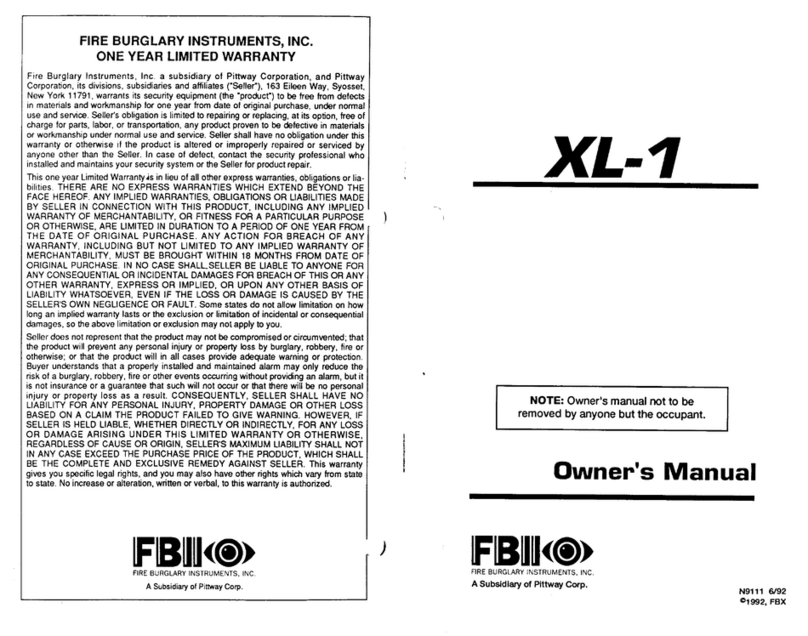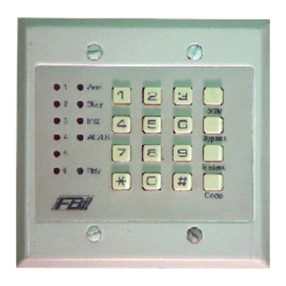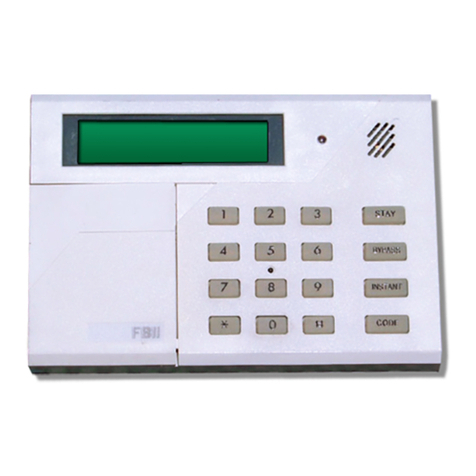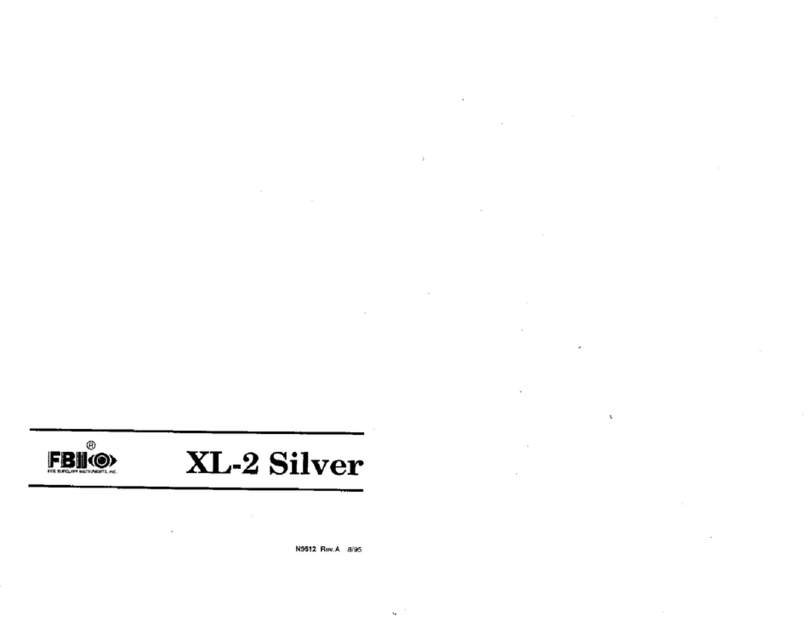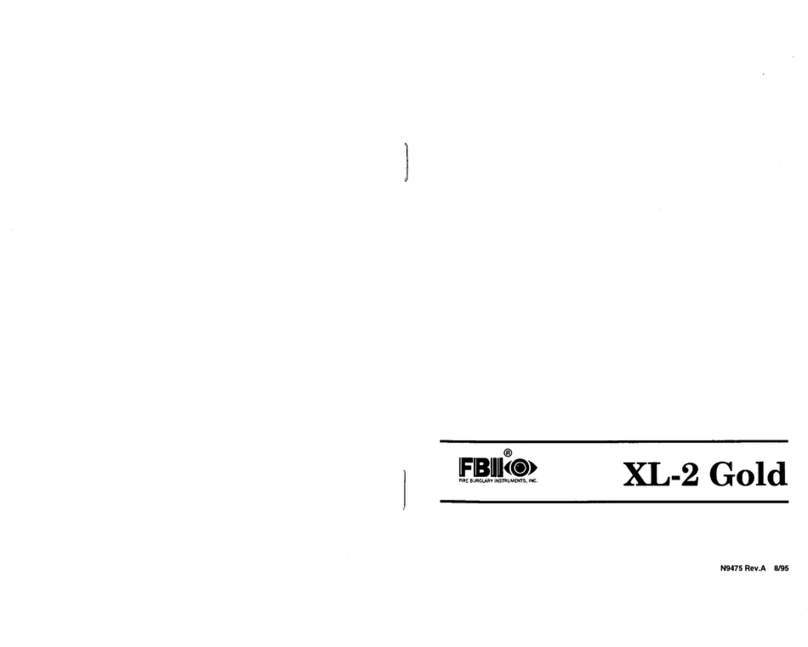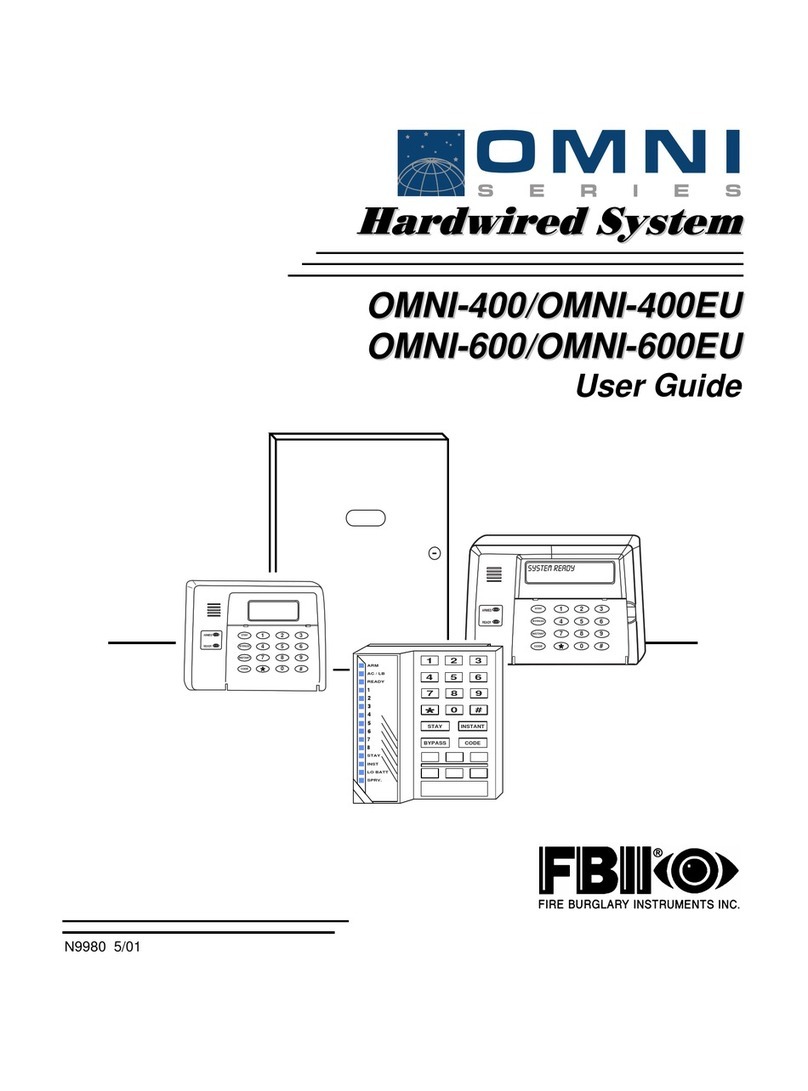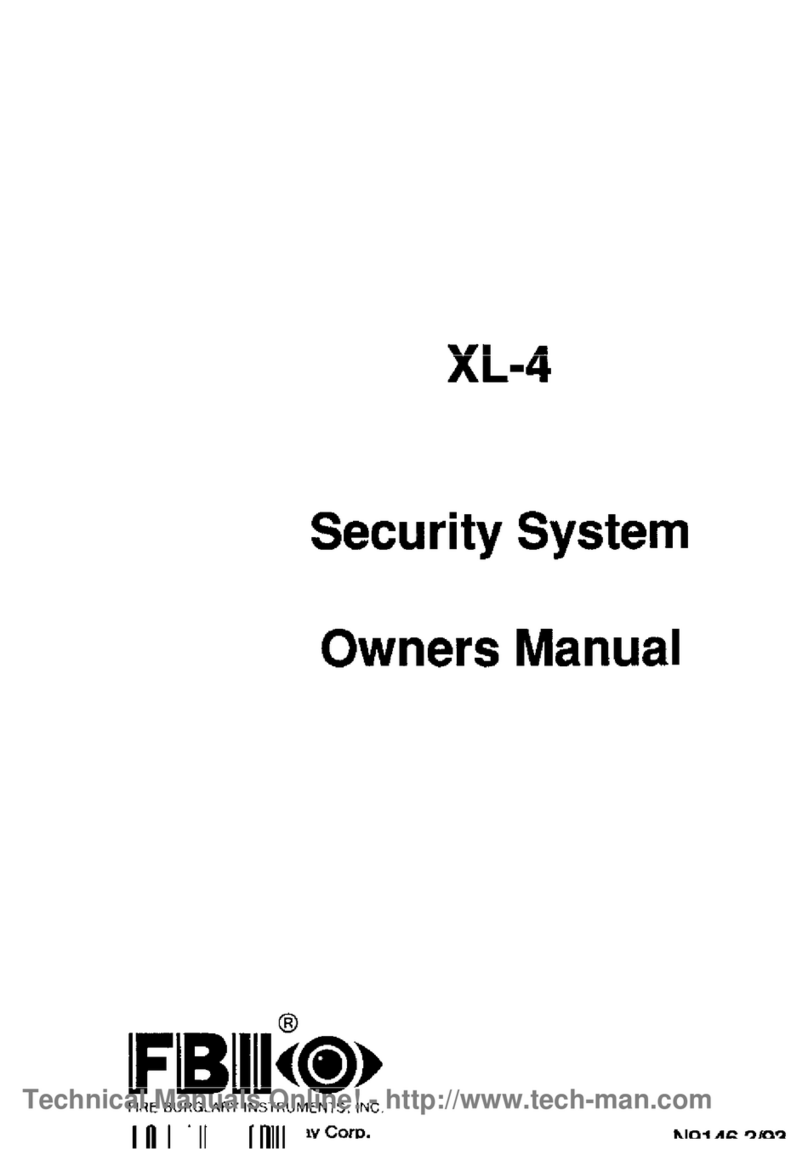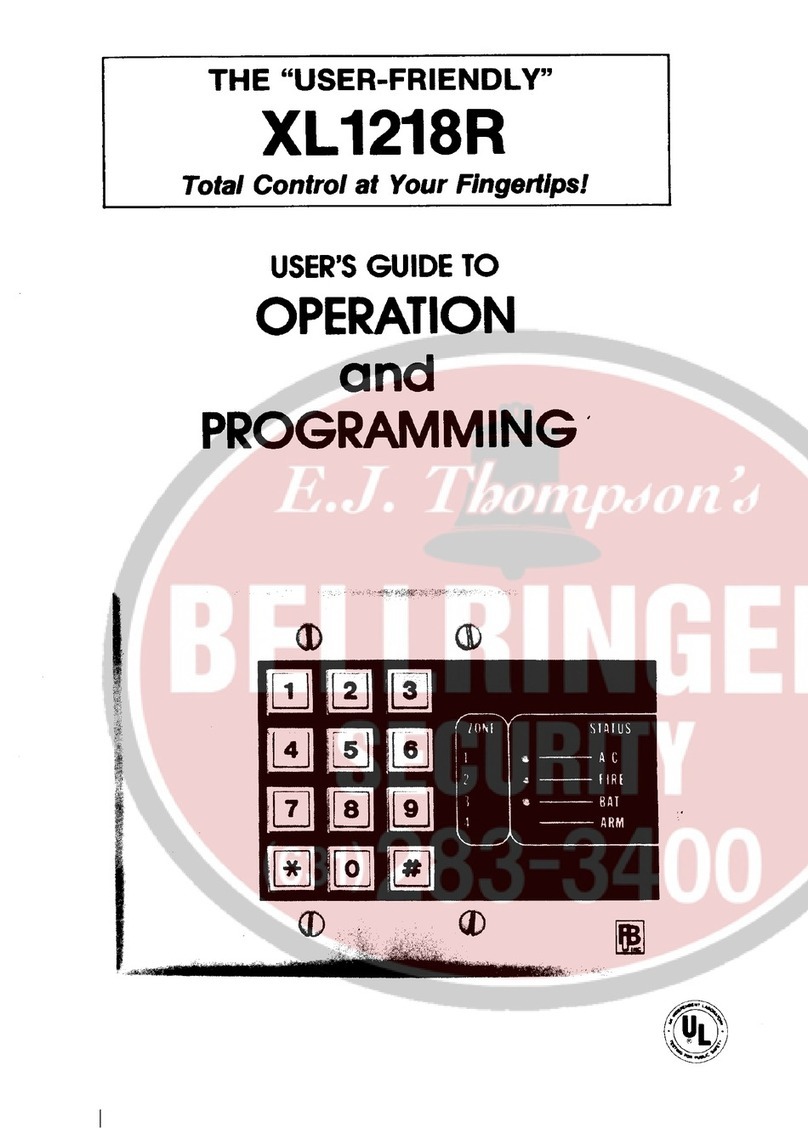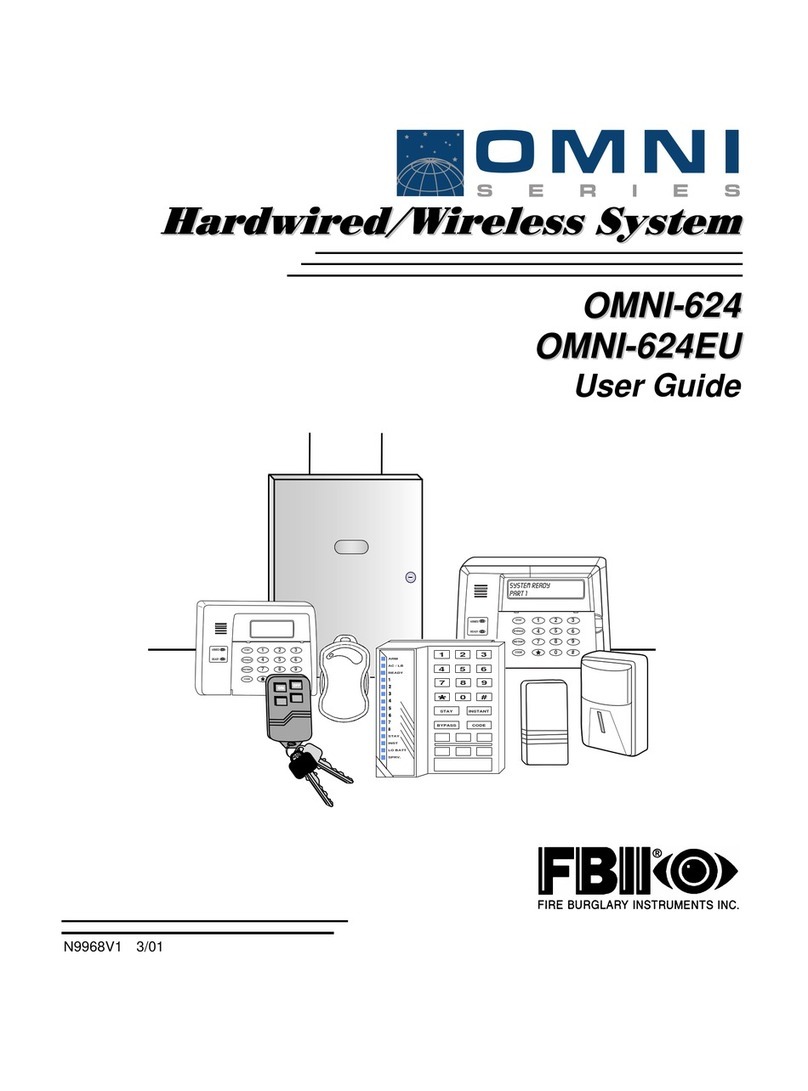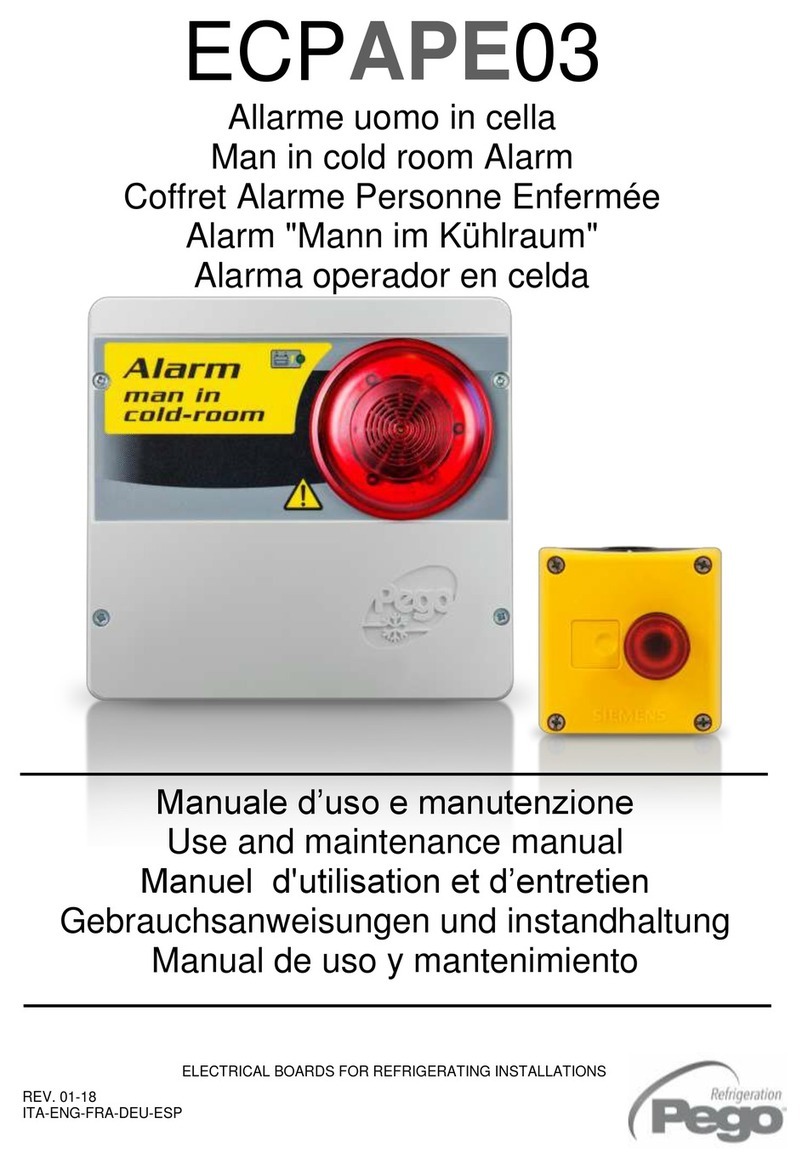
OMNI-400/OMNI-400EU and OMNI-600/OMNI-600EU Installation and Setup Guide
2-2
SYSTEM STABILIZATION MODE: When powering up a system that was previously armed when
power was removed, the system will enter a 2-minute stabilization period. This 2-minute interval is
used to allow motion detectors to stabilize. “PLEASE STAND BY” and “POWER UP DELAY” are
displayed on the OMNI-LCD and XK-7LC keypads. “PL” is displayed on the OMNI-KP keypad, and
the Armed LEDs on all keypads are lit. All LEDs on the XK108 keypad are lit.
Terminal Connections
1 & 2 — TRANSFORMER: Connect the 16.5VAC 25VA transformer, utilizing 18AWG (1mm dia.) or
larger wire at a distance not to exceed 15 feet (4.5m) from the panel, to an unswitched source of
AC mains power (120 or 220VAC).
The system can supply up to 1.8 amps of total current.
Do not use any other rating transformer, as this may result in improper operation or damage to the
unit.
The “AC/LOW BAT” keypad LED remains ON while AC power is present. If an AC loss occurs, the
“AC/LOW BAT” LED turns off immediately. If AC power remains OFF for the period programmed
in Programming Submode 1, Question 15, Location 3, the system pulses the keypad buzzer and
transmits a power-loss message to the central station, if programmed to do so. THE KEYPAD
BUZZER CAN BE SILENCED by entry of any valid user code. When AC restores, the “AC/LOW
BAT” LED lights immediately, and a Restore code is reported, if programmed.
3(+) & 4(–) — BELL OUTPUT: The total output power available for sounding devices is 1 amp (650mA
for UL installations) at 11.5 - 13.1VDC. These terminals will deliver CONSTANT output on
BURGLARY, AUDIBLE PANIC, and BELL TEST. On a FIRE condition, a PULSED or TEMPORAL
output can be generated. There are separate bell cutoff times programmable for burglary and fire
conditions within the programming sequence. For UL Household Fire Warning System
installations, the speaker must be mounted indoors for best audibility. Also, for UL installations,
use only one bell.
NOTE: Before connecting sounding devices, please consult their specifications for proper current
draw. Otherwise, the bell fuse (F1) may be blown.
NFPA 72 REQUIREMENT: All the
interconnecting pathways (cable,
wire, etc.) between the alarm
system initiating device (control
panel) and the signaling device
(bell, speaker, siren, etc.) shall be
monitored for an occurrence of an
open circuit, which prevents the
normal operation of the system. An
occurrence of an open circuit shall
be indicated by a distinctive trouble
signal.
BELL SUPERVISION (Bell) - To meet the NFPA 72 requirement,
program Question 09, Location 3, in Programming Submode 1
for bell supervision. The bell is then supervised for an open
circuit (not a short circuit) across the bell output terminals; the
keypad will indicate that a bell supervision condition has
occurred and bell supervision is reported to the CS if enabled
(Programming Submode 2, Question 25, Locations 1 and 2). If
the bell is already ringing, the supervision will not take effect
until after bell cutoff time. Refer to the following diagram:

